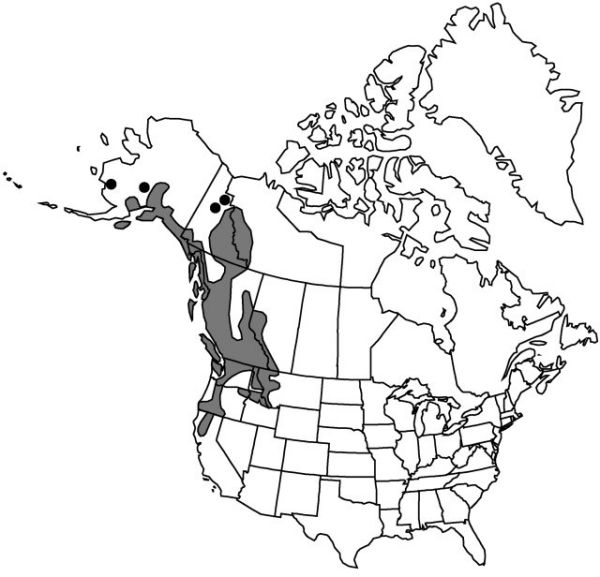Veratrum viride var. eschscholzianum
Canad. Field-Naturalist 71: 49. 1957.
Stems nearly glabrous proximally to densely tomentose distally. Leaves 15–30 × 10–18 cm. Inflorescences with branches spreading to commonly drooping. Flowers erect; tepals deep green to yellowish green, 5–12 mm. 2n = 32.
Phenology: Flowering summer–fall.
Habitat: Moist meadows, openings in coniferous forests
Elevation: 0–2500 m
Distribution

Alta., B.C., N.W.T., Yukon, Alaska, Calif., Idaho, Mont., Oreg., Wash.
Discussion
Western Native Americans (Bella Colla, Cowlitz, Kwakiutl, Okanagan, Quinault, Salishan, Shuswap, and Thompson) used Veratrum viride var. eschscholzianum as an analgesic, antirheumatic, emetic, laxative, and poison, as well as a cold, blood, heart, orthopedic, and skin aid (D. E. Moerman 1986). Native Americans from northern British Columbia and the Yukon Territory consumed young plants as herbage (A. E. Porsild 1951; G. A. Mulligan and D. B. Munro 1987).
Selected References
None.
Lower Taxa
"broad" is not a number."thick" is not a number."thicker" is not a number.